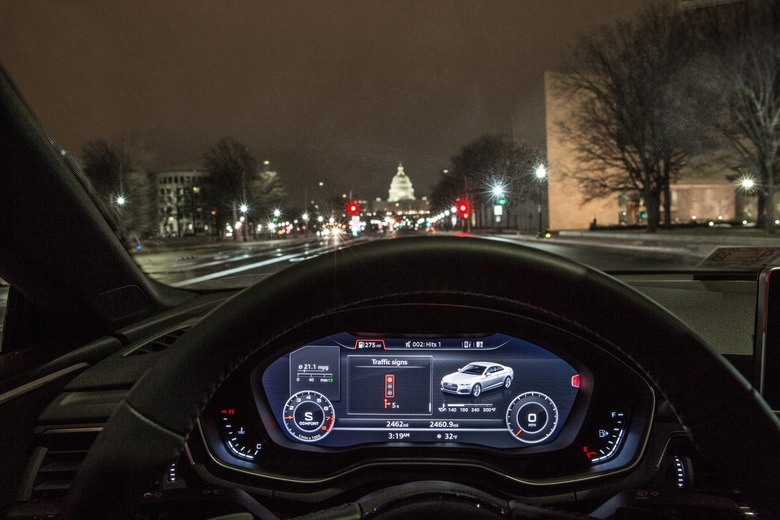Audi's V2I Green-Light Countdown Spreads To Washington, DC
Audi's traffic light information system, which gives drivers a "time to green" countdown on their dashboard as they wait their turn, is expanding to a new city. The system launched in Las Vegas, Nevada, back in 2016, but after getting the green light in Washington, D.C. is now supported in eight different cities across the US.
Dubbed Traffic Light Information, or TLI, it's one of the first examples of vehicle-to-infrastructure (V2I) in public deployment. Supported by select 2017 and 2018 model year Audi cars and SUVs, it puts a simple color-coded graphic on the dashboard display for the driver, as they near a set of traffic lights. When the lights are red, it gives a time indication of just how long the driver will need to wait before they turn green.
It's a deceptively simple system, mind. In the background, the car's 4G LTE data connection is making contact with the traffic management system, which in turn in linked to the status of the traffic lights themselves. Currently lights at more than 1,600 intersections in the US support TLI, but it has proved a challenge to expand Audi's technology given few city infrastructure systems were designed and implemented with V2I in mind.

As we found when we tried out Audi TLI back in 2016 in Las Vegas, getting the lights connected requires both hardware upgrades and new deals between providers. For that reason, Audi was reluctant to give any sort of roadmap for how fast TLI might spread across the country. In the intervening months, areas of Dallas and Houston have come online, along with parts of Palo Alto and Arcadia in California, Portland Oregon, and Denver.
What's still to come are the more advanced features that Audi has been talking about, which V2I could help unlock. Currently, for instance, TLI only shows a countdown to green: however, Audi has suggested that it could tie that into its cars' stop-start function. That way, it could only start the engine just before the lights were actually due to change or, conversely, avoid triggering the system if the wait was going to be too short to be economically useful.
Also on the roadmap is more effective navigation. Audi suggests that, if the car has a real-time view of what lights are doing in a city, it could plan a route that was quicker because the stops would be timed more efficiently. For city management, meanwhile, TLI could unlock better routing plans overall, helping identify congestion bottlenecks and assist in making emergency service response more swift.
